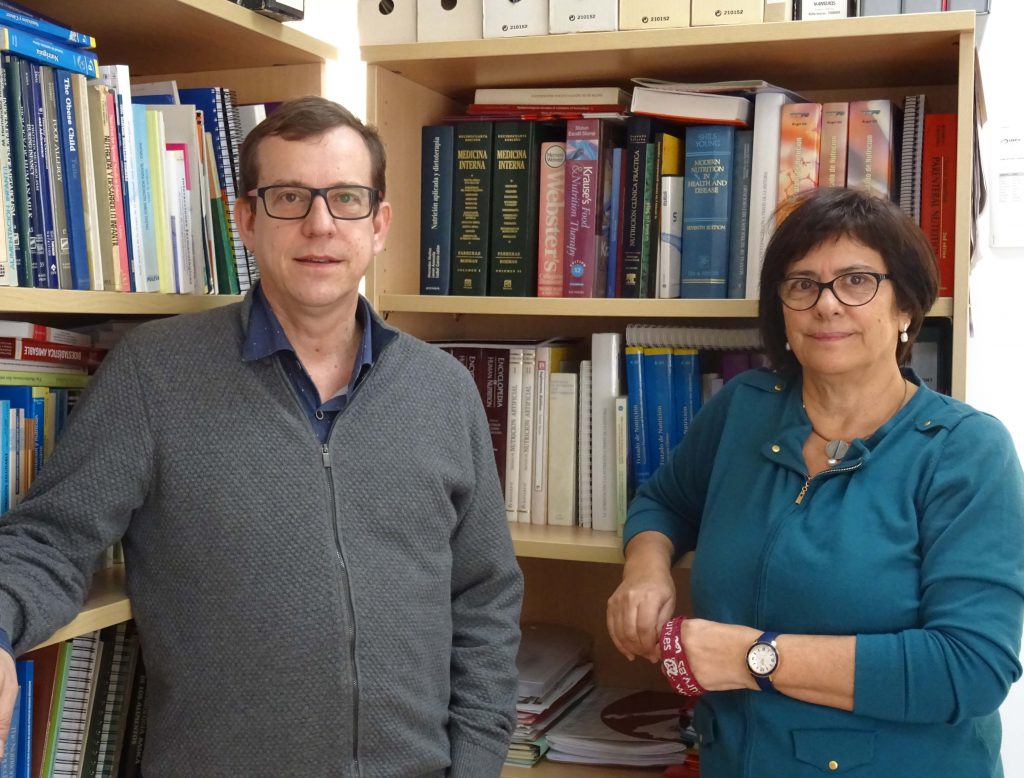20/04/2017
Obesity alters the relationship between a biomarker of iron levels and the incidence of type 2 diabetes
The association between levels of a biomarker known as the soluble transferrin receptor (sTfR) and the risk of type 2 diabetes in a population with high cardiovascular risk is conditioned by the presence of absence of obesity

The association between levels of a biomarker known as the soluble transferrin receptor (sTfR) and the risk of type 2 diabetes in a population with high cardiovascular risk is conditioned by the presence of absence of obesity
Whereas in non-obese people, high levels of the soluble transferrin receptor are associated with a lower risk of developing type 2 diabetes, in obese people the opposite is the case. The study published in the European Journal of Clinical Investigation suggests that obesity alters the relationship between this biomarker and the incidence of diabetes.
In recent decades, studies of populations from various countries have identified that excess iron is a factor that increases the risk of type 2 diabetes. In previous analyses of data from the PREDIMED study research teams at the URV have also identified this harmful effect, both as a result of excessive iron intake and of excessive iron reserves in the body.
The traditional process for determining iron levels, which was based on a protein known as serum ferritin, now uses a new biomarker known as the soluble transferrin receptor (sTfR). Nevertheless, to date only a few studies have evaluated the association between sTfR and the risk of diabetes and the findings have been contradictory. These discrepancies raised the possibility that of an additional factor that may influence the relation between sTfR and the risk of diabetes. Likewise, significantly higher levels of sTfR have been observed in obese people (thus indicating low levels of iron) than in non-obese people.
As a result, the URV’s Human Nutrition Unit and Nutrition and Public Health Unit, in collaboration with other centres participating in the PREDIMED study, decided to study if obesity affected the association between sTfR and the appearance of type 2 diabetes, and they found that this was indeed the case.
This latest study monitored 1378 men and women for an average of six years at the centres of Reus-Tarragona, Pamplona and Barcelona-Clínic, which are participating in the PREDIMED study, a randomised nutritional clinical trial studying individuals with high cardiovascular risk across Spain. The most notable results from the study have confirmed differences between obese and non-obese people in that the former have higher levels of sTfR and, therefore, almost three times the risk of developing type 2 diabetes. In contrast, in non-obese people, higher levels of sTfR, and therefore lower levels of iron, have a 60% lower risk of developing type 2 diabetes, a finding that had already been confirmed by other studies.

These results indicate the adipocyte may influence the metabolism of the biomarker sTfR, which in turn suggests that it is not a good biomarker for evaluating iron levels in obese people, but that it can be used for non-obese people. The study was led by Dr Victoria Arija, professor and head of the URV’s Nutrition and Mental Health Research Group (NUTRISAM), member of the Research Support Unit of the IDIAP Jordi Gol of the Catalan Health Institute and by Dr Jordi Salas-Salvadó, professor at the Human Nutrition Unit of the URV, senior clinician at the Sant Joan University Hospital in Reus and principal investigator for the CIBERobn. Both are members of the Pere Virgili Health Research Institute (IISPV). The study is published in the European Journal of Clinical Investigation.
Reference: Fernández-Cao, J. C., Arija, V., Aranda, N., Basora, J., Diez-Espino, J., Estruch, R., Fitó, M., Pharm, D. C. D. and Salas-Salvadó, J. (2017), “Soluble transferrin receptor and risk of type 2 diabetes in the obese and non-obese”. Eur J Clin Invest. doi:10.1111/eci.12725.
